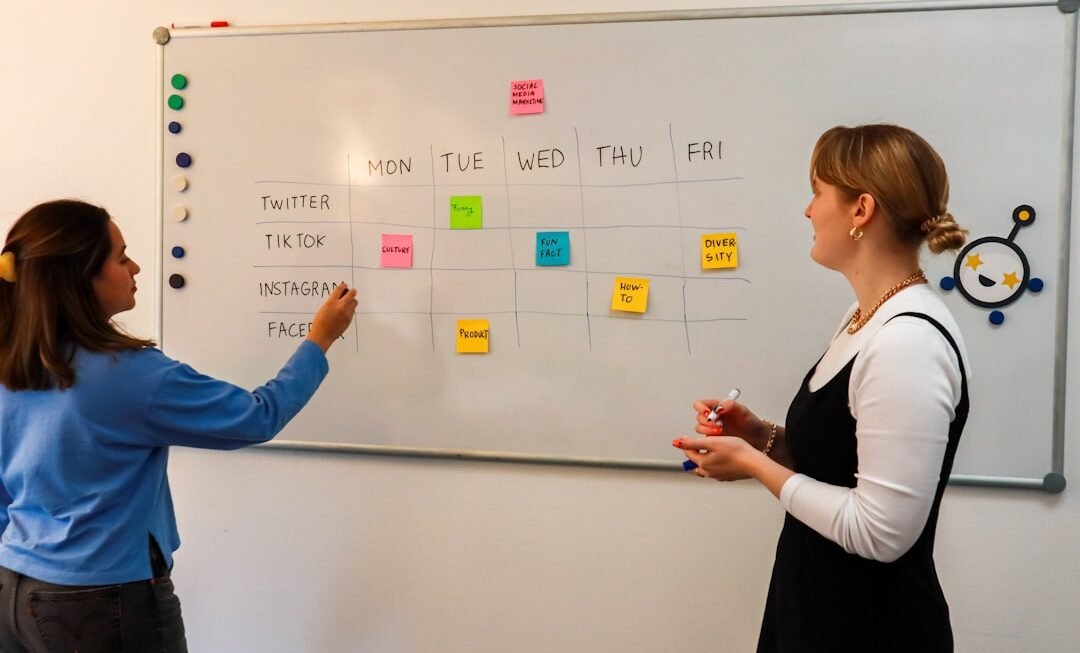Hybrid learning models represent a transformative approach to education, merging traditional face-to-face instruction with digital learning methodologies. This model is not merely a blend of two distinct educational paradigms; rather, it creates a dynamic environment where students can engage with content in multiple ways. The essence of hybrid learning lies in its flexibility, allowing educators to tailor their teaching strategies to meet the diverse needs of their students.
By integrating online resources with in-person interactions, hybrid learning fosters a more personalized educational experience that can adapt to various learning styles and paces. At its core, hybrid learning encompasses several formats, including flipped classrooms, blended learning, and fully online courses that incorporate occasional in-person sessions. For instance, in a flipped classroom model, students might engage with lecture materials at home through videos or readings and then come to class prepared to participate in discussions or hands-on activities.
This approach not only maximizes classroom time but also encourages students to take ownership of their learning. The flexibility inherent in hybrid models allows institutions to respond to changing circumstances, such as public health concerns or technological advancements, making them increasingly relevant in today’s educational landscape.
Key Takeaways
- Hybrid learning combines digital and face-to-face instruction for a more flexible and personalized educational experience.
- Benefits of hybrid learning include increased student engagement, flexibility, and access to a variety of resources and learning modalities.
- Implementing a successful hybrid learning model requires careful planning, clear communication, and ongoing support for both teachers and students.
- Challenges in hybrid learning, such as technology issues and maintaining student motivation, can be overcome through proactive problem-solving and effective communication.
- Technology plays a crucial role in hybrid learning, providing tools for communication, collaboration, and interactive digital content creation.
The Benefits of Blending Digital and Face-to-Face Instruction
The integration of digital and face-to-face instruction offers numerous advantages that enhance the educational experience for both students and educators. One of the most significant benefits is the ability to cater to diverse learning preferences. Some students thrive in traditional classroom settings, while others may find online resources more conducive to their learning.
By blending these approaches, educators can create a more inclusive environment that accommodates various styles, ensuring that all students have the opportunity to succeed. Moreover, hybrid learning promotes greater student engagement and motivation. Digital tools often incorporate interactive elements such as quizzes, videos, and discussion forums that can make learning more appealing.
When students are able to engage with content in a way that resonates with them personally, they are more likely to take an active role in their education. Additionally, the flexibility of hybrid models allows for self-paced learning, enabling students to revisit challenging concepts or accelerate through material they grasp quickly. This personalized approach not only enhances understanding but also fosters a sense of autonomy and responsibility in learners.
Implementing a Successful Hybrid Learning Model
Successfully implementing a hybrid learning model requires careful planning and consideration of various factors that influence both teaching and learning. First and foremost, educators must assess the technological infrastructure available within their institutions. Reliable internet access and appropriate devices are essential for both teachers and students to fully engage with digital content.
Schools must invest in technology that supports seamless integration between online and offline learning experiences, ensuring that all participants can access necessary resources without barriers. In addition to technology, professional development for educators is crucial in the transition to hybrid learning. Teachers need training not only in how to use digital tools effectively but also in how to design engaging hybrid lessons that leverage the strengths of both modalities.
This may involve workshops on instructional design, classroom management strategies for hybrid settings, and methods for assessing student progress in a blended environment. By equipping educators with the skills and knowledge they need, schools can foster a culture of innovation and adaptability that enhances the overall effectiveness of hybrid learning.
Overcoming Challenges in Hybrid Learning
Despite its many advantages, hybrid learning is not without challenges. One significant hurdle is ensuring consistent engagement from all students, particularly those who may struggle with self-motivation or time management when learning remotely. Educators must develop strategies to keep students accountable and connected, such as regular check-ins, structured schedules, and collaborative projects that require participation from all members of the class.
Building a strong sense of community within the classroom—both online and offline—can help mitigate feelings of isolation that some students may experience in a hybrid setting. Another challenge lies in the assessment of student performance across different modalities. Traditional assessment methods may not effectively capture a student’s understanding when they are engaged in both digital and face-to-face activities.
Educators must explore alternative assessment strategies that reflect the diverse ways students demonstrate their knowledge. This could include project-based assessments, peer evaluations, or digital portfolios that showcase a student’s work over time. By embracing innovative assessment practices, educators can gain a more comprehensive understanding of student progress and areas for improvement.
The Role of Technology in Hybrid Learning
Technology serves as the backbone of hybrid learning models, facilitating communication, collaboration, and content delivery across various platforms. Learning Management Systems (LMS) play a pivotal role by providing a centralized hub where educators can share resources, assign tasks, and track student progress. These systems enable seamless integration of multimedia content—such as videos, interactive simulations, and discussion boards—into the curriculum, enriching the learning experience for students.
Moreover, technology fosters collaboration among students, even when they are not physically together. Tools like Google Workspace or Microsoft Teams allow for real-time collaboration on projects, enabling students to work together regardless of their location. This not only enhances their ability to communicate effectively but also prepares them for future work environments where remote collaboration is increasingly common.
As technology continues to evolve, educators must remain adaptable and open to incorporating new tools that can further enhance the hybrid learning experience.
Creating Engaging and Interactive Digital Content
The creation of engaging digital content is essential for maintaining student interest and promoting active participation in hybrid learning environments. Educators should strive to develop materials that are not only informative but also interactive and visually appealing. This can include incorporating multimedia elements such as videos, infographics, and interactive quizzes that encourage students to engage with the material actively rather than passively consuming information.
Additionally, gamification techniques can be employed to make learning more enjoyable and motivating. By integrating game-like elements—such as points, badges, or leaderboards—into digital content, educators can create a sense of competition and achievement among students. This approach taps into intrinsic motivation and encourages learners to take risks and explore new concepts without fear of failure.
Ultimately, well-designed digital content can transform the educational experience by making it more dynamic and responsive to student needs.
Fostering Collaboration and Communication in Hybrid Learning Environments
Collaboration and communication are vital components of effective hybrid learning environments. To foster these skills among students, educators must create opportunities for interaction both online and offline. Group projects that require collaboration across different platforms can help students develop teamwork skills while also allowing them to learn from one another’s perspectives.
For instance, assigning a project where students must research a topic online and then present their findings during an in-person class can encourage dialogue and deeper understanding. Furthermore, establishing clear communication channels is essential for maintaining connections among students and between teachers and learners. Regular virtual meetings or discussion forums can provide spaces for students to ask questions, share ideas, and support one another throughout their learning journey.
Educators should also model effective communication practices by providing timely feedback on assignments and encouraging open dialogue about challenges faced in both digital and face-to-face settings. By prioritizing collaboration and communication, educators can create a supportive community that enhances the overall effectiveness of hybrid learning.
Assessing Student Progress in a Hybrid Learning Model
Assessing student progress in a hybrid learning model presents unique challenges that require innovative approaches tailored to the diverse nature of this educational format. Traditional assessments may not adequately reflect a student’s understanding when they are engaged in both online activities and face-to-face interactions. Therefore, educators must explore alternative assessment methods that capture the full spectrum of student performance.
Formative assessments play a crucial role in this context by providing ongoing feedback throughout the learning process rather than relying solely on summative evaluations at the end of a unit or course. Techniques such as peer assessments, self-reflections, and digital portfolios allow students to demonstrate their understanding in various ways while also encouraging them to take ownership of their learning journey. Additionally, utilizing technology tools like online quizzes or interactive assignments can provide immediate feedback to both students and teachers, enabling timely adjustments to instruction based on individual needs.
Supporting Teachers in the Transition to Hybrid Learning
The transition to hybrid learning requires significant support for teachers who may be navigating new pedagogical approaches and technologies for the first time. Professional development programs should be designed not only to enhance teachers’ technical skills but also to foster confidence in their ability to deliver effective instruction across multiple modalities. Workshops focused on instructional design for hybrid environments can empower educators to create engaging lessons that leverage both digital tools and face-to-face interactions.
Moreover, ongoing support networks—such as mentorship programs or collaborative planning sessions—can provide teachers with opportunities to share best practices and troubleshoot challenges together. Encouraging a culture of collaboration among educators fosters an environment where they feel comfortable experimenting with new strategies while also receiving constructive feedback from peers. By investing in comprehensive support systems for teachers during this transition, schools can ensure that they are well-equipped to deliver high-quality education in hybrid settings.
Addressing Equity and Access in Hybrid Learning
Equity and access are critical considerations when implementing hybrid learning models, as disparities in technology access can significantly impact student outcomes. Schools must prioritize efforts to ensure that all students have access to the necessary devices and reliable internet connectivity required for effective participation in hybrid education. This may involve partnerships with local organizations or government initiatives aimed at providing resources for underserved communities.
Additionally, educators should be mindful of the diverse backgrounds and experiences of their students when designing hybrid curricula. Culturally responsive teaching practices can help create an inclusive environment where all students feel valued and represented within the curriculum. By incorporating diverse perspectives into lesson plans and providing materials that reflect various cultures and experiences, educators can foster a sense of belonging among all learners while promoting equity within the classroom.
The Future of Hybrid Learning: Trends and Innovations
As education continues to evolve in response to technological advancements and changing societal needs, hybrid learning models are likely to become increasingly prevalent. Emerging trends such as personalized learning pathways—where students have greater control over their educational journeys—are gaining traction within hybrid frameworks. This approach allows learners to progress at their own pace while receiving tailored support based on their individual strengths and challenges.
Innovations such as artificial intelligence (AI) are also poised to play a significant role in shaping the future of hybrid education. AI-driven tools can analyze student data to provide personalized recommendations for resources or interventions tailored specifically to each learner’s needs. Additionally, virtual reality (VR) and augmented reality (AR) technologies offer exciting possibilities for immersive learning experiences that transcend traditional classroom boundaries.
As these trends continue to develop, it is essential for educators and institutions to remain adaptable and open-minded about integrating new technologies into their hybrid models. By embracing innovation while prioritizing student engagement and equity, schools can create dynamic educational environments that prepare learners for success in an increasingly complex world.












